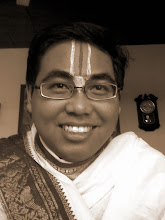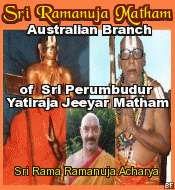Thus Sri Jayabhaya was one of the greatest patrons of Vaishnavism in Java and Nusantara. Even today we still find glorifying stories about him in Javanese oral tradition. He was such a legendary personality. One day I found an interesting story about him in a classical Javanese manuscript named Serat Dharmogandhul. This is rather controversial work in the form of prose of ordinary modern Javanese language (not in archaic Kawi). The central theme actually described the process of Javanese Islamization by very dishonest way. By its recent appearance we can’t take it seriously as a historical proves. But still we can considered this book as a representative of Javanese living oral tradition or at least as shouting sound from the core of one Javanese’s heart. Several years ago the publication of the book was banned by Indonesian Government, in fear of religious clash. But after we entering the so called reformation era, and the free distribution of all things by internet (thanks to the IT), this book was appeared again (at least in the form of softcopy files).

 This is Petilasan Sri Jayabhaya, where he disappeared with his consort to ascend to the Divine Abode of Lord Vishnu. Some Javanese still offering their obeisance and burn incenses at the spot.
This is Petilasan Sri Jayabhaya, where he disappeared with his consort to ascend to the Divine Abode of Lord Vishnu. Some Javanese still offering their obeisance and burn incenses at the spot.
It was said Sri Jayabhaya, the beloved of Lord Vishnu, with his consort Taradevi disappeared with their divinized body and go back to the Supreme Abode of Lord Vishnu. He has two
senapati (commanders in chief), called Kyayi Daha and Kyayi Daka. Both have mystical
siddhis to change their bodies into subtle substances. By their
siddhis, they also could stay alive as long as they want (
kayavyuham-sargakartrtvasilpa-siddhi). Sri Jayabhaya’s daughter called by the Javanese as Nyi Ratu Pagedhongan (The Queen of Inner Chamber) also attained same
Tantrika-siddhis and mystical yogic powers. After departure of their master, the two
senapati entered invisible realm. And so did the princess. Although have the powerful
siddhis, but they couldn’t follow their master to the highest destination. So the three persons, a princess and two warriors decided to use their mystic prowess for protecting Java and Nusantara, the land of their master.
 Mount Kelud, an active volcano in East Java. Believed as the palace of Kyayi Tunggulwulung, its guardian.
Mount Kelud, an active volcano in East Java. Believed as the palace of Kyayi Tunggulwulung, its guardian.
Kyayi Daha became famous as Kyayi Bhuta-locaya (The Trustworthy Being). He subdued all negative powers and malign spirits in Sri Jayabhaya’s capital. He put all Bhutas, ghostly beings, under his control and became their king. He built his palace in Selabale (Platform of Stone), an invisible subtle realm in a gigantic slab of stone inside a cave, at northwest of Kili Suci Temple. Kyayi Daka became Kyayi Tunggulwulung (The Column-like Pivot). He also put all Bhutas under his control to help him protect the area of Kelud. Kelud is a still active volcano and has erupted several times. Kyayi Tunggulwulung protect the village of the people who still loyal to their ancient faith and their king, Sri Jayabhaya. He has power to redirect the lava so these people may save. Nyi Mas Ratu Pagedhongan became Nyi Mas Ratu Anginangin (The Revered Queen of The Subtle Invisible Realm; Angin means wind, air, or invisibility) and built her invisible kingdom in the depth of Southern Sea of Java. She subdued all Bhutas of the whole Java and put them under her control. It was believed that the mystic Queen should be propitiated by anyone who wants to take the throne of Java, or in other word the whole Nusantara or Indonesia. She was also famous as Kangjeng Ratu Kidul (The Revered Queen of Southern Region)

 The Queen (in an artist's drawing) and the Javanese who traditionally go to Southern Sea to bring offerings for the Guardian of Nusantara's Subtle Realm
The Queen (in an artist's drawing) and the Javanese who traditionally go to Southern Sea to bring offerings for the Guardian of Nusantara's Subtle Realm
Every Javanese kings always built their relationship mystically with this master of all Bhutas. If she didn’t give her agreement to the present leader, then the whole Bhutas of Indonesia will creating continuous disasters and making so much problem in peoples’ mind (because they were subtle beings, so they influence our subtle bodies, not directly or physically). Without any hesitation they would make “unworthy peoples” vanished from their beloved land (Remember, the Bhutas have more attachment to their belongings and areas than mundane human. They were also very fierce, wrathful, jealous creatures and full of anger). Their dissatisfaction will take the various forms such as natural disasters, epidemics, accidents and even influence peoples’ mind to become insane and kill each other. Only if the people make their self, worthy enough to lives in Nusantara, thus by not abandoning their own spiritual culture and their ancestors, the Devas and Bhutas will give them peace. Otherwise they should have rightful kings or national leaders who still remember their cultural heritages, honor the glories of Sri Jayabhaya, and have been blessed by his heir, The Queen of Indonesia’s Subtle Realm. Only such a leader could prevent these happenings and protect their people from the Bhutas’ anger. (The pious country will be protected by the Devas (gods) and Pitris (ancestral spirits) from any danger caused by the ever angry Bhutas. Even we could make peace with the Bhutas by offered some favor to them. But if the peoples and the leaders considered “unworthy”, then The Devas and Pitris will abandon them and let all the Bhutas pour their anger and negative vibrations on them)
 The sacred dance Bedhaya Semang of Yogyakarta and its similar form Bedhaya Kethawang of Surakarta were enacted this mystic connection between mundane Kingship and invisible realm authority. The dance itself was a ritualistic performance and there is a scene when the dancer circumambulate the Throne in pradakshinam as in Hindu-Vedic or Buddhist traditions
The sacred dance Bedhaya Semang of Yogyakarta and its similar form Bedhaya Kethawang of Surakarta were enacted this mystic connection between mundane Kingship and invisible realm authority. The dance itself was a ritualistic performance and there is a scene when the dancer circumambulate the Throne in pradakshinam as in Hindu-Vedic or Buddhist traditions

The tradition of continuing this mystic relationship was still living in two most influential Javanese Kingship of Yogyakarta and Surakarta. They can’t abandon this centuries old Javanese tradition, though externally they have embraced Islam. The late president Soekarno, the founding father of Republic of Indonesia, was believed to take this tradition also. We have no historical evidence about such mystical supernatural occurrences. This all based on oral tradition and traditional beliefs of the people. How much truth and accuracy these beliefs have, let we just see in reality. But for myself, personally, I have to believe it. Once again, this is not about right or wrong, real or unreal. This is about my cultural identity, the pride of our country and civilization, and our love to Hindu-Vedic heritages of our honorable ancestors. The Vedic tenets taught us to not abandon any living entities, even if they were demonic or ghostly in nature. As one who take shelter in Vaishnavite Sampradaya and surrender exclusively under our Acharya Parampara and The Supreme Personality of Godhead Sri Krishna, we have to thank these beings for let us perform our
sadhana in their beloved land.

 This is Petilasan Sri Jayabhaya, where he disappeared with his consort to ascend to the Divine Abode of Lord Vishnu. Some Javanese still offering their obeisance and burn incenses at the spot.
This is Petilasan Sri Jayabhaya, where he disappeared with his consort to ascend to the Divine Abode of Lord Vishnu. Some Javanese still offering their obeisance and burn incenses at the spot. Mount Kelud, an active volcano in East Java. Believed as the palace of Kyayi Tunggulwulung, its guardian.
Mount Kelud, an active volcano in East Java. Believed as the palace of Kyayi Tunggulwulung, its guardian.
 The Queen (in an artist's drawing) and the Javanese who traditionally go to Southern Sea to bring offerings for the Guardian of Nusantara's Subtle Realm
The Queen (in an artist's drawing) and the Javanese who traditionally go to Southern Sea to bring offerings for the Guardian of Nusantara's Subtle Realm The sacred dance Bedhaya Semang of Yogyakarta and its similar form Bedhaya Kethawang of Surakarta were enacted this mystic connection between mundane Kingship and invisible realm authority. The dance itself was a ritualistic performance and there is a scene when the dancer circumambulate the Throne in pradakshinam as in Hindu-Vedic or Buddhist traditions
The sacred dance Bedhaya Semang of Yogyakarta and its similar form Bedhaya Kethawang of Surakarta were enacted this mystic connection between mundane Kingship and invisible realm authority. The dance itself was a ritualistic performance and there is a scene when the dancer circumambulate the Throne in pradakshinam as in Hindu-Vedic or Buddhist traditions The tradition of continuing this mystic relationship was still living in two most influential Javanese Kingship of Yogyakarta and Surakarta. They can’t abandon this centuries old Javanese tradition, though externally they have embraced Islam. The late president Soekarno, the founding father of Republic of Indonesia, was believed to take this tradition also. We have no historical evidence about such mystical supernatural occurrences. This all based on oral tradition and traditional beliefs of the people. How much truth and accuracy these beliefs have, let we just see in reality. But for myself, personally, I have to believe it. Once again, this is not about right or wrong, real or unreal. This is about my cultural identity, the pride of our country and civilization, and our love to Hindu-Vedic heritages of our honorable ancestors. The Vedic tenets taught us to not abandon any living entities, even if they were demonic or ghostly in nature. As one who take shelter in Vaishnavite Sampradaya and surrender exclusively under our Acharya Parampara and The Supreme Personality of Godhead Sri Krishna, we have to thank these beings for let us perform our sadhana in their beloved land.
The tradition of continuing this mystic relationship was still living in two most influential Javanese Kingship of Yogyakarta and Surakarta. They can’t abandon this centuries old Javanese tradition, though externally they have embraced Islam. The late president Soekarno, the founding father of Republic of Indonesia, was believed to take this tradition also. We have no historical evidence about such mystical supernatural occurrences. This all based on oral tradition and traditional beliefs of the people. How much truth and accuracy these beliefs have, let we just see in reality. But for myself, personally, I have to believe it. Once again, this is not about right or wrong, real or unreal. This is about my cultural identity, the pride of our country and civilization, and our love to Hindu-Vedic heritages of our honorable ancestors. The Vedic tenets taught us to not abandon any living entities, even if they were demonic or ghostly in nature. As one who take shelter in Vaishnavite Sampradaya and surrender exclusively under our Acharya Parampara and The Supreme Personality of Godhead Sri Krishna, we have to thank these beings for let us perform our sadhana in their beloved land.




























No comments:
Post a Comment